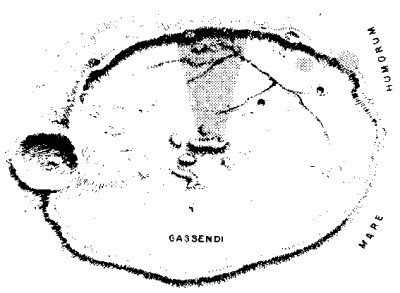 |
Science Frontiers ONLINE No. 109: Jan-Feb 1997 |
|
|
Lunar Landslide Lights
Moonwatchers have reported light flashes, strange red glows, and mist-like patches emanating from certain lunar locales, particularly the huge craters Alphonso and Picard. Hundreds of such observations have accumulated since the Middle Ages. Modern more-systematic scrutiny indeed confirms that the moon is not such a dead place after all. (See ALF in The Moon and the Planets for much more on this fascinating subject.)
Moonquakes, gaseous emissions, and even volcanic activity have been the favorite explanations of these TLPs (Transient Lunar Phenomena), but these are only surmises.
The many close-up photos of the lunar surface taken in 1994 by the lunar satellite Clementine gave B. Buratti, K. Herkenhoff, and T. McConnochie the opportunity to search for geological common denominators connecting the sites where TLPs have been most frequent. The suspicious sites are characterized by bluish spectra that usually indicate unusually fresh deposits of lunar debris. Furthermore, these areas are usually found along the inside edges of large craters. Buratti et al opine that these are the sites of recent landslides that have cascaded off the crater edges. The dust and volatile gases released by these events might account for the observed luminous phenomena.
(Cowen, Ron; "Explaining a Lunar Mystery," Science News, 150:314, 1996.)
Reference. To order the book The Moon and the Planets (mentioned above), visit here.
 |
The lunar crater Gassendi on April 30 and May 1, 1966. The shaded areas mark the red glow observed on those dates by astronomers. |